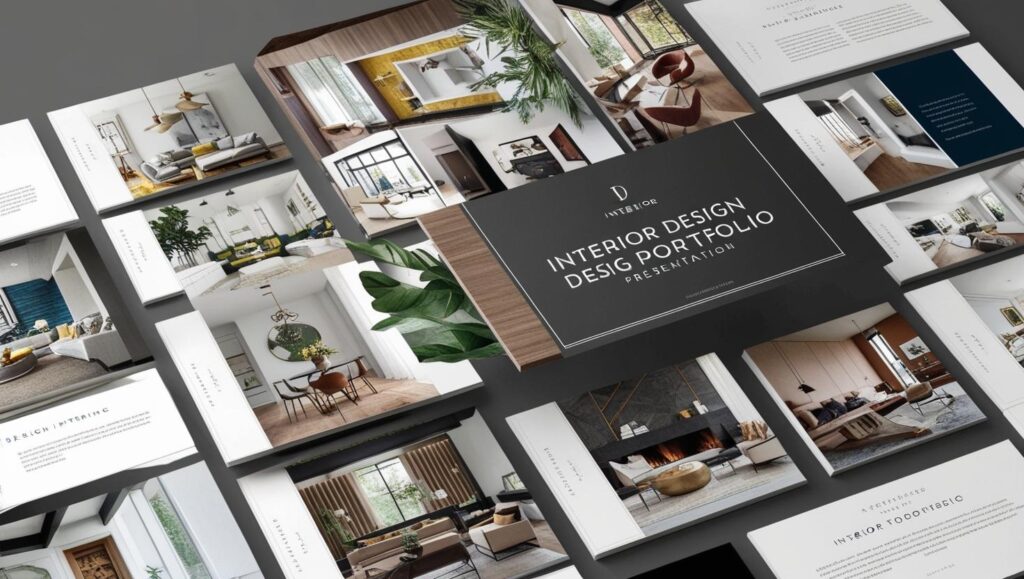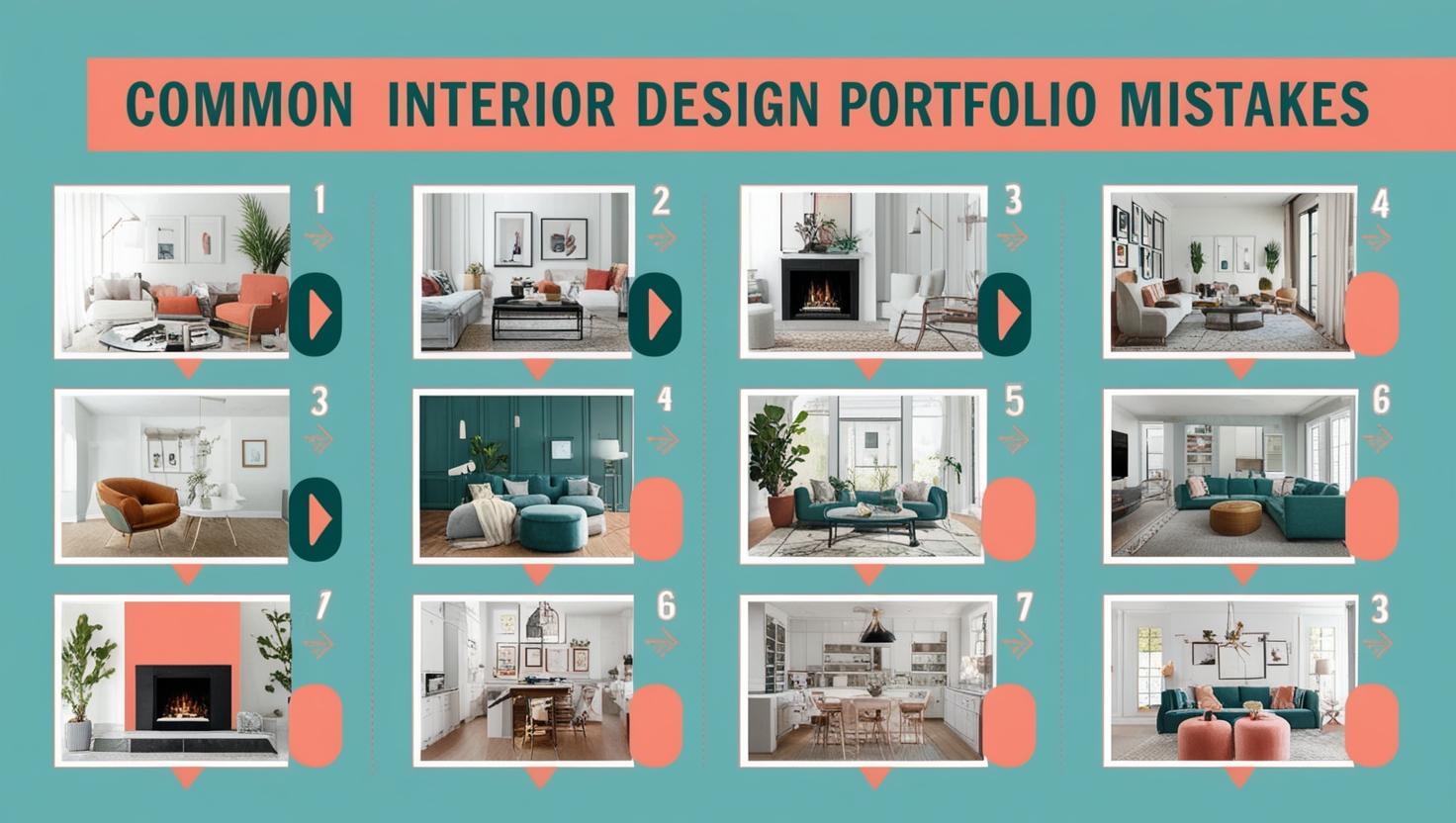Is Your Interior Design Portfolio Whispering or Shouting?Common Mistakes to Avoid
So you’ve poured your heart and soul into crafting interiors stunning . You’ve mastered the art of balancing textures, played with light like maestro a and breathed life into lifeless spaces .Now, the culmination of your hard work needs a stage: your portfolio. But creating a portfolio that truly *shouts* your talent isn’t as simple as throwing together some pretty pictures .It’s about telling a compelling story showcasing your strategically skills and leaving a lasting impression on potential clients design or schools . Let’s dive into the common pitfalls that can sabotage even the most designs breathtaking.
The “Mystery Box” Syndrome: Lack of Clarity and Context
that Remember time you went to an art gallery and stared blankly at an abstract painting, utterly clueless about the artist’s intention? Don’t let your portfolio be that painting. A portfolio without proper context is missed a opportunity. Each project should have a narrative – a clear explanation of your design process the client’s brief the challenges you faced and ,most importantly the *solutions* you implemented.
Beyond the Pretty Pictures: Tell Your Design Story
Imagine a prospective client scrolling through your portfolio. They see a beautiful kitchen but they don’t know the story behind it. Did you work with a tight budget? Did the client have a specific preference style? Did you have to overcome any structural limitations? Adding these details provides context and makes your work more relatable. It’s like difference the between simply a seeing delicious meal and knowing the chef’s inspiration and the passion behind creating it . For interior design students this storytelling element is crucial for demonstrating not just aesthetic skill but also problem-solving ability .
Adding the Missing Pieces: Detailed Project Descriptions
A simple caption like “Modern Living Room” just won’t cut it. Think comprehensive project descriptions that include: the project’s location and scope the client’s needs and desires the design challenges your creative solutions and the materials and technologies used. Consider using bullet points to highlight key elements and keep text the concise and engaging.Remember you’re not just showing your work; you’re showing your *thinking*.

The “One-Size-Fits-All” Fallacy: Lack of Specialization
Let’s be honest – interior design is a broad field. You might love everything from minimalist modern to opulent baroque. However trying to showcase *everything* in your portfolio can your dilute message. A highly focused portfolio that clearly highlights your specialization—be it residential design , commercial spaces , sustainable design or a niche style like Scandinavian minimalism—is far more effective than a scattered collection of disparate projects .
Finding Your Niche: The Power of Specialization
Think of it like this: would you rather hire a general contractor or a specialist in historical restoration if you’re renovating a Victorian house ? The same principle applies to interior design.By specializing,you position yourself as an expert in a area specific attracting clients who are seeking your unique skills.For interior design students choosing a specialization early on can help you focus your studies and build a strong portfolio that reflects your area of expertise .
Branding Your Expertise: Consistency is Key
Once you’ve identified your niche maintain consistency throughout your portfolio.This includes your design style,photography style and the overall aesthetic your of presentation . Imagine a portfolio with inconsistent fonts , color palettes and photo quality – it sends a mixed message about professionalism your and capabilities . A well-branded portfolio demonstrates your attention to detail and your ability to create a cohesive and professional image.
The “Flop Photographic”: Poor Quality Visuals
Your portfolio is your visual calling card. Poor-quality photography can render even the most stunning designs forgettable. Think blurry images awkward angles and inconsistent lighting – they can diminish the impact of your work and create a unprofessional impression .
in Investing Professional Photography: The ROI
Professional photography is an investment that pays off. High-quality images showcase your work in its best light,making it more appealing to potential clients. Think about hiring a professional photographer who understands how to capture the essence of your designs and highlight the details that matter most. For interior design students, consider collaborating with photography students to gain experience and build portfolio your simultaneously.
Beyond Photography: The Importance of Editing
Even the best photographs need some post-processing . Ensure your images are well-edited,with consistent color grading proper exposure and sharp focus.Avoid over-editing which can make your designs look artificial. The goal is to present your work as realistically and attractively as possible.
The “Digital Disaster”: Poor Presentation & Online Presence
Your online portfolio needs to be as visually stunning and user-friendly as your physical designs. A poorly designed website,a clunky user experience, or outdated information can severely impact your credibility and diminish potential the success of your portfolio .
Creating a Digital Showcase: Website Design Matters
Your website should be easy to navigate visually appealing and showcase your best work in an organized and effective way. Think of your online portfolio as a virtual extension of your personal brand; it needs to reflect your style and professionalism. For interior design students platforms like Behance or Instagram are excellent for showcasing work but a dedicated portfolio website ultimately provides the strongest presence .
Staying Current: The Importance of Website Updates
Remember to update your portfolio regularly with new projects and testimonials. An outdated suggests portfolio a lack of current projects and diminishes your credibility.A frequently updated website demonstrates your ongoing commitment to your profession and showcases the newest aspects of your design expertise.
The “Forgotten Factor”: Lack of Testimonials & Social Proof
Potential clients want to know they can trust you. Testimonials and client reviews provide social proof and build confidence in your abilities. Include positive feedback from satisfied clients to showcase reliability your and build a strong reputation.
Testimonials Gathering: Asking the Right Questions
When asking for testimonials, guide your clients by asking specific questions that highlight the positive aspects of your work such as your problem-solving abilities ,creativity, and communication skills . Encourage your to clients provide specific examples and quantifiable results .
Using Testimonials Effectively: Placement & Presentation
Display testimonials prominently on your website and within your portfolio. You can incorporate strategically them into your project descriptions or create a dedicated testimonials section . Make sure the testimonials are genuine and reflect the positive experiences of your clients.
The “Missed Mark”: Ignoring Your Target Audience
Understanding your target audience is vital creating to a portfolio that resonates. Are you targeting high-end residential commercial clients property developers or budget-conscious homeowners? Tailoring your portfolio to specific your audience increases its effectiveness and ensures you’re presenting your work in the most relevant appealing and way.
Knowing Your Audience: Style and Presentation
Consider the specific tastes preferences and of your target audience. A portfolio designed for luxury clients might feature high-end materials and sophisticated aesthetics while a portfolio for budget-conscious homeowners might focus on practicality and cost-effective solutions.Remember you’re not showing just your skills; you’re showcasing how you can meet your clients’ needs .
Reaching Your Audience: Platform Selection
Consider where your target audience is most likely to find you. If you’re targeting high-end clients, you might focus on building a strong professional website and networking at industry events .If you’re aiming for younger clients you might prioritize social media platforms like or Instagram Pinterest.
By avoiding these common pitfalls, your interior design portfolio will go a from collection simple of images to a powerful tool for attracting clients securing job opportunities and showcasing the true depth of your talent.Remember , it’s not just about the designs themselves; it’s about the story you tell the expertise you showcase and the connections you make. Your portfolio is a window into your world—make sure it’s a window worth looking through!


